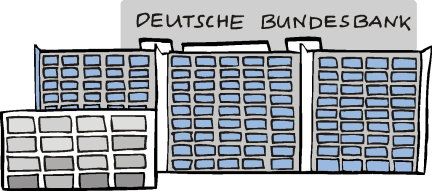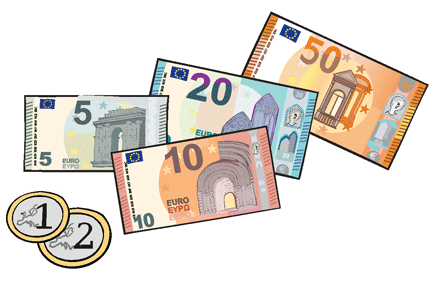Coins and banknotes Information about Bundes-Bank. In easy-to-read format.
Coins and banknotes are called cash.
You often pay with cash.
At the cinema, for example.
Sometimes you also pay with your bank card.
At the supermarket, for example.
Where do coins and banknotes come from?

The Bundesbank issues coins and banknotes.
The Bundesbank does the following:
It tells a printing works to print banknotes.
The printing works prints the banknotes.
Only the Bundesbank is allowed to say this.
No other bank is allowed to tell a printing works to print banknotes.
Then cash transport vehicles bring the banknotes to the Bundesbank’s buildings.
These buildings are also called branches.
The Bundesbank has branches all over Germany.
The Bundesbank’s branches pass the banknotes and coins on to the banks.
This is how cash is distributed around the country.
Here you can see some banks.
These banks pass banknotes on to businesses and people.
People take the banknotes out of cash machines.
The money can now be used by you and others.
At the news stand, for example.

Sometimes people try to make their own banknotes and coins.
These people are called counterfeiters.
The money they have made is called counterfeit money.

This is not allowed.

Counterfeiters try to buy things with their counterfeit money.
This is against the law.
The police arrest forgers and destroy forged money.
Illustrations: © Reinhild Kassing










